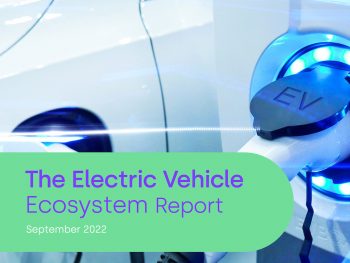EVs outnumber charge points by at least 15 to one
The UK will fail to deliver the electric vehicle infrastructure needed for the 2030 ICE ban unless both central and local government radically ramp up investment.

One in three (31%) EV drivers say they now frequently have to queue for a charger, according to the Novuna report
That’s according to a new report from Novuna Vehicle Solutions which finds that the ratio of electric cars to charge points has grown threefold, from 5:1 to 15:1 in just three years, and is forecast to hit 54:1 by 2030.
While the Government wants 300,000 chargers installed by 2030 – a tenfold increase on the 30,000 installed in the past decade – it has little hope of hitting this target, according to The Electric Vehicle Ecosystem (EVE) Report from Novuna.
The analysis, based on insights from over 2,000 motorist interviews and with in-depth analysis of public data, finds that the number of electric cars chasing every public charge point has grown threefold in just three years, bringing rapidly growing competition for public charge points.
One in three (31%) EV drivers say they now frequently have to queue for a charger and three in four (76%) believe that based on their experiences of EV ownership, the UK’s current charging infrastructure is simply not fit for purpose.
The report also unmasks some significant regional disparities, with drivers in the South-West (32:1) and North-West (28:1) having the hardest time finding a charger, unlike Londoners who benefit from comparatively good provision (5:1).
The competition is set to intensify too; three in five (59%) drivers of petrol or diesel (ICE) vehicles say their next car is likely to be an EV. Novuna predicts that this future demand will result in more than half of UK adults being EV drivers by 2030, the date when the sale of new petrol and diesel vehicles will be phased out. This would equate to 54 EVs vying for every public device by 2030 – even if the 300,000 public charge point milestone is reached.
The majority of motorists say the onus is on the public sector to accelerate the rollout of charge points. Four in five EV drivers (81%) want the Government to do more to boost the number of chargers in the UK, and virtually the same proportion (79%) want their local authority to do more. Petrol and diesel drivers concur with these views (71% and 68% respectively) and say they want to see better provision before they make the switch.
But drivers are also seeking to take action in their own hands by seeking off-street parking; two-thirds (68%) say they would never buy or live in a house without the space to install their own charge point.
Jonny Berry, head of decarbonisation, Novuna Vehicle Solutions, said: “Our findings highlight how the charging network is not only a cause of frustration for EV drivers, but also the millions of petrol and diesel drivers looking to transition to electric sooner rather than later. Having to queue for a charge is a concern raised all too often by motorists, illustrating just how pressing it is for more charge points to be installed as a matter of urgency. Without radically transforming existing infrastructure addressing charging anxiety, the road map to net zero will undoubtedly extend beyond 2030.”
Tanya Sinclair, senior director, policy, Europe at ChargePoint, agreed that we need a continued focus on investment in EV charging infrastructure from the Government.
“Today’s charging experience is unfortunately not where it needs to be – with EVs now outnumbering chargers by a 15:1 ratio – and we must therefore look to remove barriers to general adoption in the right way. As well as needing a large concentration of charging stations, we need to also consider the implementation of effortless charging experiences, scalable designs, quality products and high-class service.”
To access the Novuna report, click here.

